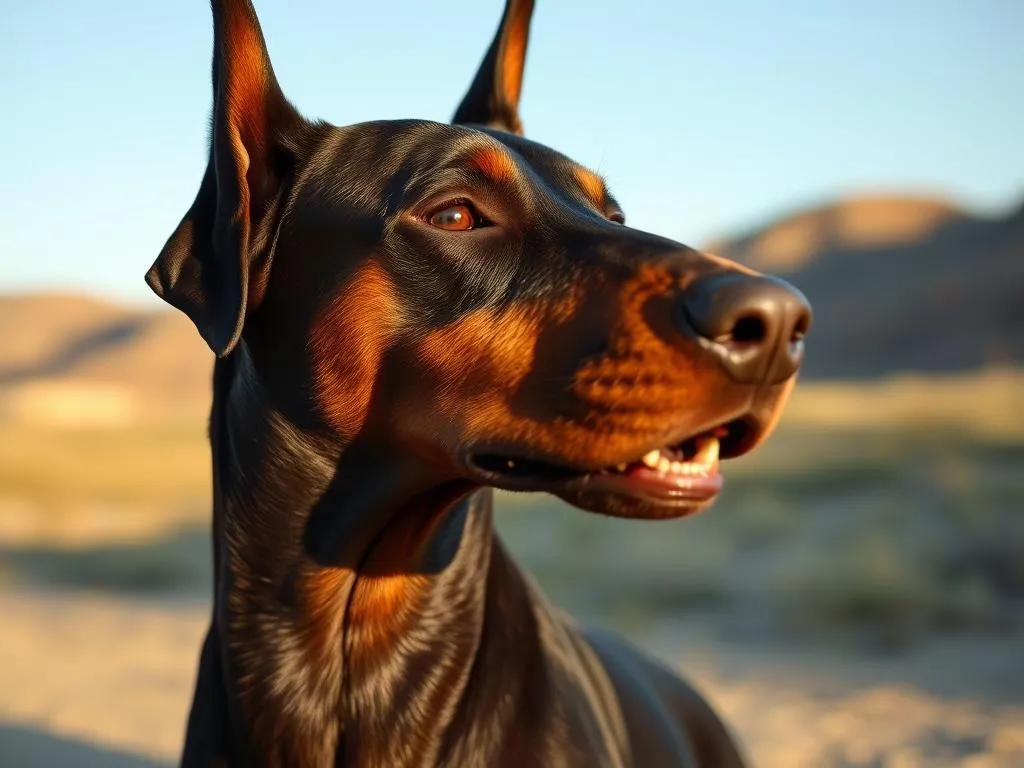
Introduction
Taking care of a dog involves more than just feeding and grooming; it encompasses a deep understanding of their health needs throughout their life stages. One crucial aspect of dog health care is understanding the heat cycle, especially for female dogs like Doberman Pinschers.
Doberman Pinschers are known for their loyalty, intelligence, and strength, making them popular pets and working dogs. However, their health care requires specific knowledge, particularly regarding their reproductive cycles. Understanding when a Doberman goes into heat is vital for owners to prepare for the changes in behavior and health that accompany this phase.
Being equipped with the right information allows Doberman owners to manage their pet’s heat cycle effectively and ensure their well-being.
Understanding Dog Heat Cycles
What is a Heat Cycle?
The heat cycle in dogs, also known as the estrous cycle, refers to the time when a female dog is receptive to mating. This cycle is a complex hormonal process that prepares the body for potential pregnancy. In dogs, the heat cycle occurs approximately every six months, although this can vary based on multiple factors, including breed and age.
Stages of the Heat Cycle
The heat cycle consists of four distinct stages:
-
Proestrus: This is the initial stage that lasts about 7-10 days. During this time, the female dog begins to show signs of swelling in her vulva, and there may be blood-tinged discharge. She will attract male dogs but will not be receptive to mating.
-
Estrus: This stage is often referred to as “standing heat” and typically lasts for about 5-14 days. During estrus, the female is fertile and will accept male dogs. The discharge may become lighter in color, and the vulva remains swollen.
-
Diestrus: Following estrus, this stage lasts about 60-90 days, regardless of whether the dog has mated. The body prepares for pregnancy but will revert to a non-pregnant state if no mating occurs.
-
Anestrus: This is the resting stage that lasts until the next proestrus cycle, typically lasting several months. During anestrus, the reproductive system is inactive.
Frequency of Heat Cycles
Most female dogs experience heat cycles approximately every six months. However, individual factors, such as breed, age, and overall health, can affect this frequency. For example, Doberman Pinschers may have cycles that range from every four to eight months, with younger dogs often cycling more frequently than older ones.
When Does a Doberman Go Into Heat?
Age of Onset
Doberman Pinschers typically experience their first heat cycle between six months and two years of age. The age at which a Doberman goes into heat can vary widely among individual dogs. Some may experience their first heat as early as six months, while others may not cycle until they reach one or two years old. It’s essential for owners to monitor their Doberman’s development and consult with a veterinarian if they have concerns about their dog’s reproductive health.
Signs a Doberman is in Heat
Identifying the signs that a Doberman is in heat can help owners manage the situation effectively. Some common behavioral and physical signs include:
-
Behavioral Changes: Increased affection, irritability, and restlessness are common during this time. Some dogs may exhibit a heightened interest in male dogs or become more vocal.
-
Physical Signs: The most noticeable physical sign is the swelling of the vulva, which becomes prominent during proestrus. Additionally, there may be a blood-tinged discharge that lasts for several days.
-
Duration and Timing: The entire heat cycle, from proestrus to anestrus, can last several weeks. Owners should be aware of the timeline to anticipate behavioral changes in their Doberman.
Heat Cycle Timeline for Dobermans
A typical heat cycle for Dobermans follows a general timeline:
- Day 1-10: Proestrus begins; swelling and discharge are noticeable.
- Day 11-14: Estrus occurs; the female becomes receptive to males.
- Day 15-30: Diestrus phase, where the dog’s body prepares for potential pregnancy.
- Months 1-6: Anestrus; the body rests until the next proestrus begins.
Visual aids, such as charts or graphs, can be helpful for owners to track their Doberman’s cycle and understand when the various phases occur.
Caring for a Doberman in Heat
Preparing for the Heat Cycle
Preparing for your Doberman’s heat cycle can help make the experience more manageable. Here are some essential supplies to have on hand:
- Dog Diapers: These can help contain any discharge and keep your home clean.
- Bedding: Provide comfortable bedding that can be easily washed.
- Comfort Items: Ensure your dog has toys and blankets that offer comfort during this time.
Creating a comfortable environment is crucial for a Doberman in heat. A calm atmosphere can help reduce stress and anxiety, making the experience more tolerable for both the dog and the owner.
Managing Behavior Changes
During heat, Dobermans may exhibit various behavioral changes, including increased affection and mood swings. To manage these changes:
- Maintain Routine: Stick to regular feeding and walking schedules.
- Provide Distractions: Engage your dog with toys or training exercises to keep her occupied.
- Limit Interaction with Male Dogs: If possible, avoid exposing your Doberman to male dogs during her heat cycle to prevent unwanted mating.
Health Considerations
Regular veterinary check-ups are essential during this time. Monitoring your Doberman for any signs of complications, such as excessive bleeding or lethargy, is crucial. If you notice any abnormalities, consult your veterinarian immediately.
Health Implications of Heat Cycles
Risks Associated with Heat Cycles
While heat cycles are a natural part of a female dog’s life, they come with certain risks. Some potential health issues include:
-
Pyometra: A serious infection of the uterus that can develop if a dog is not spayed. Symptoms to watch for include excessive drinking, lethargy, and purulent discharge.
-
Unintended Pregnancy: If not managed correctly, a Doberman in heat can become pregnant. Owners should take precautions to prevent unwanted litters.
Long-term Health Management
Spaying your Doberman is one of the most effective ways to manage health risks associated with heat cycles. Spaying before the first heat cycle can significantly reduce the risk of certain cancers and other health issues.
Behavioral Considerations During Heat
Socialization and Interaction
A Doberman in heat may have altered interactions with other dogs. It’s essential to manage socialization carefully during this time:
- Supervised Interactions: If your Doberman is socialized with other dogs, ensure interactions are supervised and controlled.
- Limit Exposure to Male Dogs: During the heat cycle, limit your Doberman’s access to male dogs to prevent mating.
Training Tips
Adjusting training routines during your Doberman’s heat cycle can help maintain her behavior. Here are some tips:
- Positive Reinforcement: Use positive reinforcement methods to encourage desired behaviors.
- Shorter Training Sessions: Keep training sessions short and engaging to accommodate mood swings and distractions.
Conclusion
Understanding when a Doberman goes into heat is a vital aspect of responsible pet ownership. By being informed about the heat cycle, signs, and management strategies, owners can ensure their Doberman’s comfort and health during this time. Knowledge empowers you to protect your pet from potential health issues and helps maintain a harmonious environment for both you and your dog. Always remember to consult with your veterinarian for personalized advice tailored to your Doberman’s unique needs.









